Have you wondered about the difference between a charcuterie board and a cutting board?
The popularity keeps rising, with the market size for cutting boards expected to grow by a CAGR of 3.34% and reach USD 13371.14 million by 2027.
Similarly, the online search for charcuterie boards by homeowners continues to rise each day. According to research, charcuterie boards’ online search has risen by 300 percent, showing their increased popularity.
When you think of a charcuterie board, think of an opportunity to show off your culinary skills. On the other hand, a chopping board offers you a flat surface for slicing or chopping your meats and vegetables.
It’s therefore clear that the main difference between these two boards lies in their use. However, that’s not all you need to know.
This article discusses more areas of difference between these two boards. Additionally, it helps you to understand each one of them better.
Read on to the end.
JUMP TO: Table Of Comparison | Charcuterie Board | Cutting Board | Charcuterie Board and Cutting Board Differences | Bottomline |
- The critical difference between a cutting board and a charcuterie board is its usage.
- Charcuterie boards come in a wider variety of designs compared to cutting boards.
- Cutting board is less costly compared to a charcuterie board
- Charcuterie boards are lighter than cutting boards
Quick Overview (Table of Comparison)
| Parameter | Cutting Board | Charcuterie Board |
| Size | Small to big | Some are bigger than cutting boards |
| Design | Limited designs | It has a variety of designs |
| Use | For chopping, slicing, and dicing meats and vegetables | For serving meats and cheese |
| Price | Affordable | Relatively pricey |
| Material | Mostly of hardwood, plastic, bamboo, glass, stone, ceramic, silicone, and stainless steel | Mostly of hardwood, marble, metal, and glass |
| Accessories | It rarely comes with any. | It comes with accessories such as knives and cutting mats |
| Thickness | Thicker | Thinner |
| Weight | Heavier | Lighter |
| Maintenance | Requires less maintenance | Requires less maintenance |
Charcuterie Board – Explained.
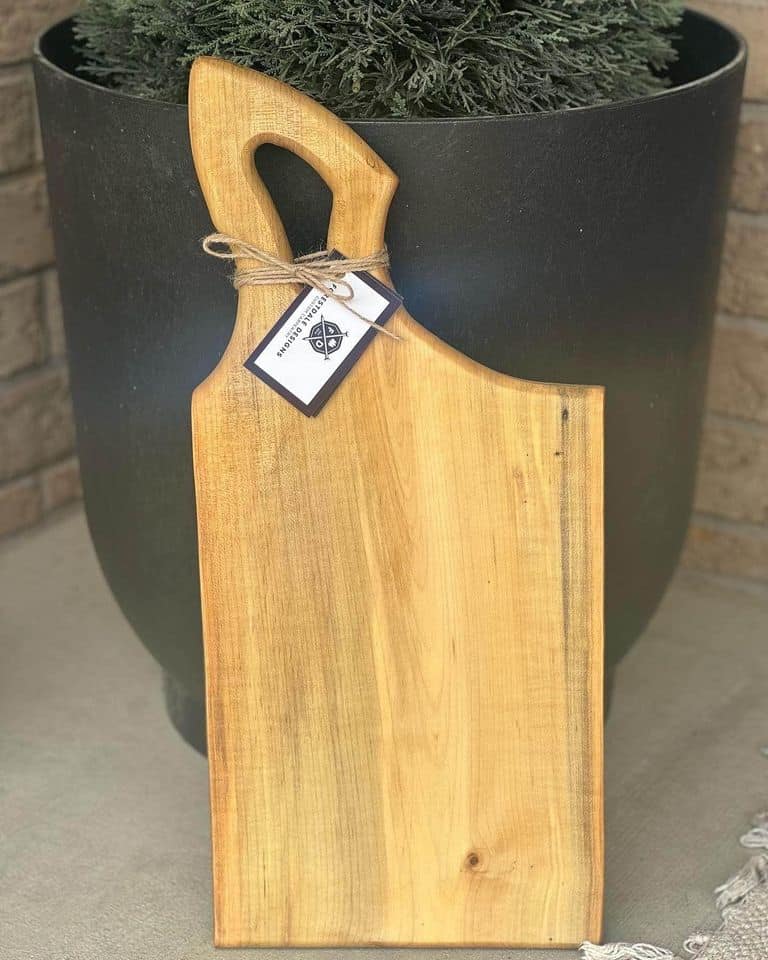
The word charcuterie has a French origin meaning cooked, processed, or cured meats. The board is mostly used to serve cheese, meats, and other foods.
It’s more of a platter or tray with raised sides and comes in various designs, sizes, and shapes. You can get sizes ranging from long and narrow for use in a buffet-style spread or small rounded for us in small intimate gatherings.
Other specialized charcuterie boards come with compartments to plan your meats decently. This board will enable you to make an impressive display of your culinary skills.
Pros
- Impressive food presentation: Charcuterie boards allow you to display your food to your guests.
- Customizable: You can easily change the components of your charcuterie board based on your guests’ occasion and taste.
- Light: Most boards are lighter and, therefore, easy to carry around as you serve your food.
- Beautiful designs: These boards come in various stunning designs, adding to the décor of your kitchen and dining table.
- Variety: They come in various sizes, ranging from long to short or tiny to bigger. As such, you can get one suitable for each occasion.
- Easy to maintain: Wooden boards only require frequent oiling to prevent cracking, while marble and glass require only water and soap.
Cons
- Expensive: Thanks to their design, most charcuterie boards are relatively costly compared to other boards.
Cutting Boards – Explained
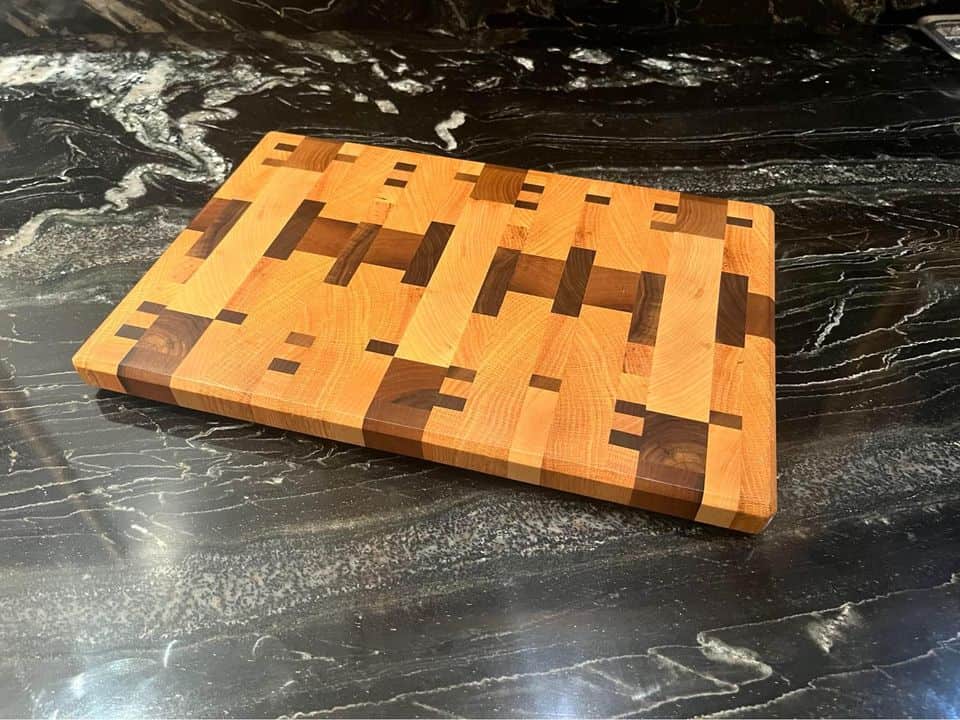
A cutting board is a standard kitchen tool used for food preparation.
Cutting boards differ in size, shape, and thickness.
They are available in various types: wooden, plastic, bamboo, glass, stone, ceramic, silicone, and stainless steel.
Irrespective of the type, one characteristic stands out for all of them– they have a flat cutting surface.
Unlike a charcuterie board, mainly used for serving, a cutting board is suitable for various tasks. You can use it for slicing meat, fruits, cooked food, chopping vegetables, or even as a serving platter.
So, what are the pros and cons of a cutting board?
Pros
- Variety of options: There is a wide range of cutting boards. You can choose your cutting board’s material, shape, size, and thickness based on your taste and preferences.
- Easy Care and Maintenance: Most cutting boards are easy to care for. Ensure that you wash the board thoroughly after every use, preferably with warm running water and dish soap. Then, dry them well before storage.
- Sturdy and Durable: Cutting boards have an incredibly stable and reliable working surface. Therefore, you don’t have to worry about injuries resulting from a wobbling surface when preparing food. They can withstand heavy daily use without breaking down.
- Adds Style to Your Kitchen: Most cutting boards are aesthetically appealing and add style to your kitchen. For example, wood adds natural warmth and beauty to a kitchen space. Ceramic and glass cutting boards are super elegant.
Cons
- Can be Unhygienic: Some cutting boards, primarily plastic, can harbor germs when not cleaned properly.
Related Read : Can You Put A Wooden Cutting Board In The Oven?
8 Key Differences Between Charcuterie Boards and Cutting Boards
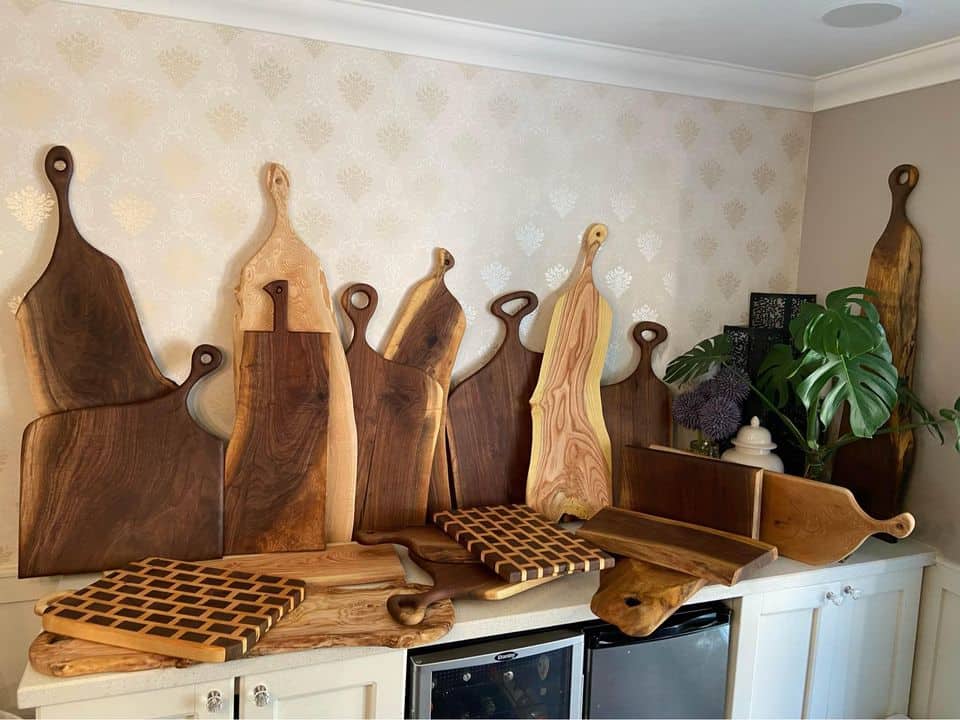
Size
The optimal size of either a cutting board or a charcuterie board mostly depends on your needs. How much serving do you want to put on the charcuterie board? Or how much food do you intend to chop on the cutting board?
The standard measurements for a cutting board are 12 by 18 inches. However, you can still get smaller or larger boards than this.
However, charcuterie boards come in wider sizes.
You must be wondering, aren’t there smaller sizes of charcuterie boards?
Yes, they are there. You can get smaller boards that are only a few inches long. In other words, depending on the people you want to serve, you can get any size of a charcuterie board.
When choosing a charcuterie board, remember the number of cheeses, meat, and fruits you want to serve.
Verdict: If a large size is your primary consideration, the charcuterie board will carry the day between the two boards.
Design
Cutting boards may not be the go-to boards if the design is your key consideration. Most of them have a simple construction; a flat surface with straight edges and corners.
However, some might have juice grooves to help catch liquids. Some more advanced models also have built-in storage to keep your knives and other cutting tools.
On the other hand, Charcuterie boards come in complex designs. Many of them feature unique shapes and intricate carving details. For ease of carrying, some also have handles. The beautiful artwork also entails intrinsic finishes that make them stand out.
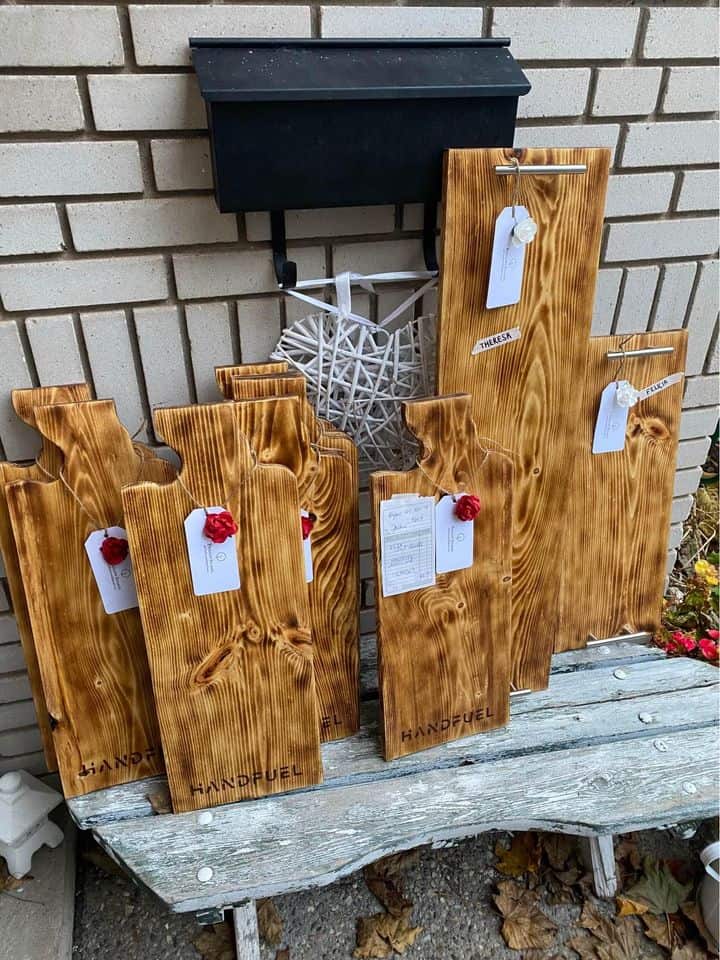
However, remember that it also boils down to what use you intend to use your board.
Verdict: If the design is what you are looking for, charcuterie boards are the deal here. They come in various designs for you to choose from.
Use
The use of these two boards is the key difference between them.
Charcuterie boards’ primary function is to serve meats, cheeses, and other foods. These boards mostly focus on presentation.
Even the name “charcuterie” is French for cured meats. It’s no wonder, then, that you will find them mostly full of ham, salami, and prosciutto.
On the other hand, the cutting board is about functionality. They provide a flat surface for chopping or dicing your meats, fruits, and vegetables.
Verdict: If you are looking for a board to help you slice and dice your food, the cutting board is what you need. However, if you want an opportunity to display your culinary skills, a charcuterie board is the best option.
Also Read: Bamboo Vs. Wood Cutting Board
Material
You’ll agree that quality is a key consideration for all kitchen equipment. The material used determines how long an item will last.
Similarly, it’s crucial to establish the material used in the making of each board. Besides durability, the material will determine the overall look and the ease of cleaning.
Cutting boards are mostly made of hardwoods such as walnut, maple, and cherry. Hardwoods make the best materials because they can withstand wear and tear from daily chopping.
You can also find charcuterie boards made of hardwood. However, others are also made of other materials, such as marble, metal, and glass.
Verdict: Charcuterie boards are the winner here. They have a wide variety of materials.
Price
Do you check the prices of kitchen appliances and tools before purchasing them?
Well, most people do.
When working on a budget, the price could be important when choosing between a charcuterie board and a cutting board.
Cutting boards are often less pricey than charcuterie boards. Most models have a price range of $20 to $50. However, some high-end cutting boards have a price tag of over $100.
On the contrary, the small charcuterie boards cost around $30, while the larger ones cost $100 or more. In addition, you find that the charcuterie boards with more intricate designs and higher quality cost more irrespective of the size.
Verdict: Cutting boards are the winner in this category. They are cheaper than charcuterie boards.
Thickness and Weight
The thickness of a board greatly determines its weight. In most cases, the thicker the board, the heavier it is.
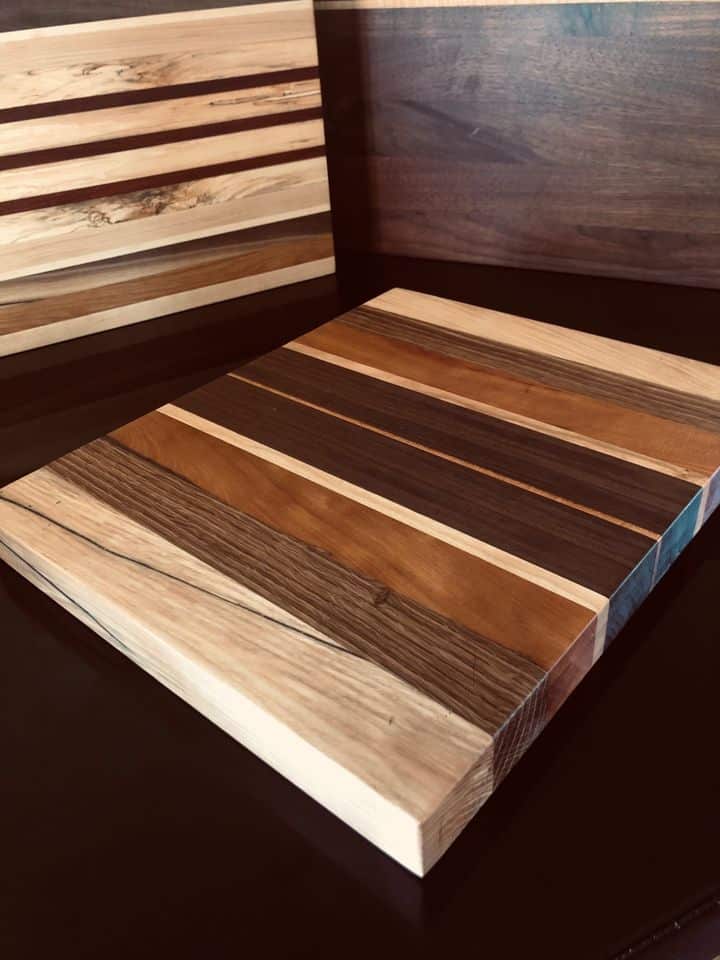
The cutting board is slightly thicker than the Charcuterie board. They come in thicknesses ranging from 1/4 to 1 inch. Consequently, they also tend to be heavier than charcuterie boards.
However, the thickness of the cutting board also depends on the material. In this case, wooden boards tend to be thicker than those made of marble or other materials.
Verdict: If weight is an essential factor for you, charcuterie boards would be the most appropriate. However, cutting boards are the best option if you are looking for thickness.
Accessories
You will agree with me that accessories are some of the critical considerations when buying kitchen equipment. Most of us will go for that item with several accessories because it gives more value for money.
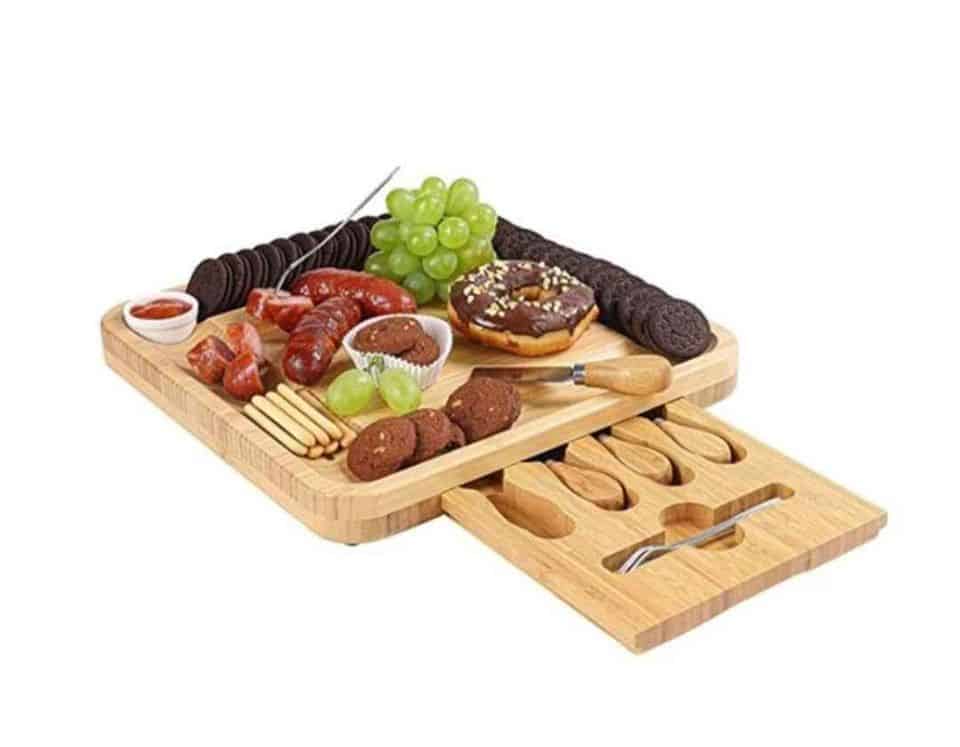
Unfortunately, many cutting boards do not come with any accessories.
Verdict: Charcuterie boards carry the day here. They usually come with various accessories, such as serving utensils, knives, and cutting mats.
Maintenance
Any kitchen item that requires little maintenance is usually a go-to item for most of us.
Charcuterie boards and cutting boards require little maintenance. If your board is made of wood, you may only need to oil it regularly to prevent cracking. However, if it’s made of glass or marble, use warm water and soap to clean it.
Verdict: The two boards tie on this one. They both require very minimal maintenance.
Related Read: Acacia Vs. Teak Cutting Board
Wrapping it up
It won’t hurt to have both a cutting board and a charcuterie board because each performs a different function. However, if you have to choose only one of the two, consider the purpose for which you want it.
A cutting board will be ideal if you are looking for a commission to help you prepare food. However, if you are looking for a committee to assist you in serving, a charcuterie board is what you need.
![27 Types of Cutting Boards Explained [Buying Guide Included] 27 Types of Cutting Boards Explained [Buying Guide Included]](https://houseadorable.com/wp-content/uploads/2022/12/cutting-board.jpg)
![Bamboo Vs. Wood Cutting Board [9 Differences Explained] Bamboo Vs. Wood Cutting Board [9 Differences Explained]](https://houseadorable.com/wp-content/uploads/2023/01/cutting-board.jpg)
![Wood Cutting Board Vs. Plastic Board [Which is Safer?] Wood Cutting Board Vs. Plastic Board [Which is Safer?]](https://houseadorable.com/wp-content/uploads/2023/01/wood-board.jpg)
![Is Bamboo Wood Good for Cutting Boards?[8 Reasons Explained] Is Bamboo Wood Good for Cutting Boards?[8 Reasons Explained]](https://houseadorable.com/wp-content/uploads/2023/01/316002766_5887666997938019_9068589372518329358_n.jpg)
![Can Cutting Boards Dull Knives? [Answered + Explained In-Depth] Can Cutting Boards Dull Knives? [Answered + Explained In-Depth]](https://houseadorable.com/wp-content/uploads/2022/11/knives.jpg)
![What Are Kitchen Sinks Made Of ? [13 Types+Pros & Cons] What Are Kitchen Sinks Made Of ? [13 Types+Pros & Cons]](https://houseadorable.com/wp-content/uploads/2022/01/Sink-MAterial.jpg)
![Is Acacia Wood Good For Cutting Boards? [Explained] Is Acacia Wood Good For Cutting Boards? [Explained]](https://houseadorable.com/wp-content/uploads/2023/01/wood-table-top-with-acacia-chopping-board-with-blur-kitchen-counter-background-is.jpg)
![Granite Vs. Marble Vs. Quartz Countertops [12 Differences+Pros & Cons] Granite Vs. Marble Vs. Quartz Countertops [12 Differences+Pros & Cons]](https://houseadorable.com/wp-content/uploads/2022/03/quartz-marble.jpg)